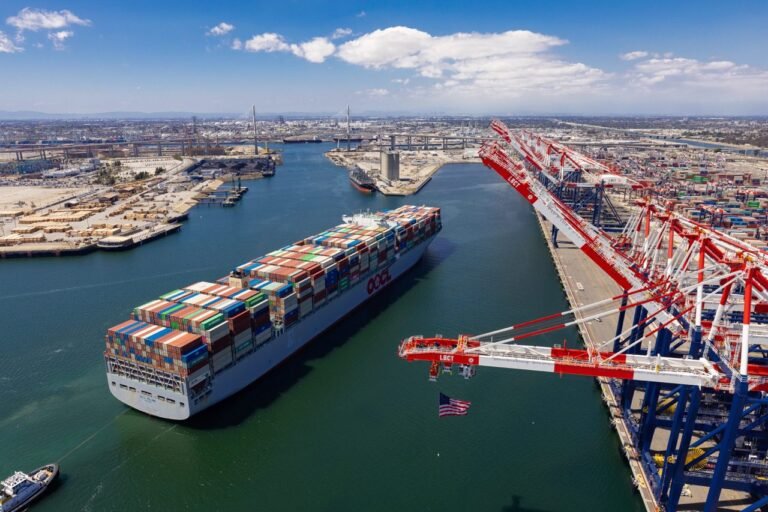Cargo Volume at Port of Long Beach Sees Significant Drop in June
Cargo volume at the Port of Long Beach decreased significantly in June, with dockworkers processing 704,403 twenty-foot equivalent units (TEUs), representing a 16.4% drop compared to the same month last year. This decline contrasts sharply with neighboring Port of Los Angeles, which last week reported record June numbers amid the same tariff concerns.
The Port of Long Beach saw imports decline 16.9% to 348,681 TEUs while exports dropped 10.9% to 87,627 TEUs. Empty containers moving through the port also decreased by 17.4% to 268,095 TEUs.
Despite June’s slowdown, Port of Long Beach CEO Mario Cordero remains optimistic about July prospects. “We’re anticipating a cargo surge in July as retailers stock up on goods ordered during the 90-day pause placed on tariffs and retaliatory tariffs,” said Cordero.
This temporary pause follows a turbulent period in U.S.-China trade relations amid the Trump Administration’s hectic tariff policy, with “reciprocal” tariffs now delayed until August 1.
Port of Los Angeles Sets New Record in June
The Port of Los Angeles, on the other hand, handled 892,340 TEUs in June, marking an 8% increase year-over-year and setting a new record for the busiest June in the port’s 117-year history. Gene Seroka, Executive Director of the Port of Los Angeles, noted that “Some importers are bringing in year-end holiday cargo now ahead of potential higher tariffs later in the year,” adding that “July may be our peak season month as retailers and manufacturers bring orders in earlier than usual, then brace for trade uncertainty.”
June’s throughput showed sharp month-over-month rebounds following a sluggish May. At Los Angeles, total throughput jumped nearly 25% from May’s 716,619 TEUs, with loaded imports surging 32% to 470,450 TEUs. Long Beach also posted gains compared to a month earlier, with a 10% increase from May—driven by a 16.6% rise in imports to 348,681 TEUs.
Industry Predictions and Outlook
The ports of Los Angeles and Long Beach together handle about a third of U.S. ocean trade, serving as key indicators of national economic activity. According to the Global Port Tracker report from the National Retail Federation and Hackett Associates, U.S. ports may experience a temporary U.S. import volume rebound in July before significant declines when delayed tariffs take effect.
Despite current challenges, the Port of Long Beach has moved 4,746,631 TEUs through the first half of 2025, up 10.6% from the same period in 2024. The Port of Los Angeles reported handling nearly 5 million TEUs during the same period, a 5% increase over last year.
Long Beach Harbor Commission President Bonnie Lowenthal emphasized the port’s commitment to maintaining operations regardless of economic conditions. “No matter the economic situation, our facilities, dockworkers and marine terminal operators continue to make this the premier gateway for trans-Pacific goods movement,” she said.
The uncertain trade environment continues to impact supply chains nationwide, with Ben Hackett, Founder of Hackett Associates, noting that “a flurry of tariff-related announcements from the Trump administration has only served to further increase supply chain uncertainty,” and that “the global supply chain functions best in a trade environment that is smooth and predictable.”
Subscribe for Daily Maritime Insights
Sign up for gCaptain’s newsletter and never miss an update
— trusted by our 108,996 members

